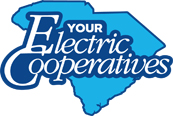Conservation
ESSENTIAL QUESTION: How do co-ops help provide environmentally responsible power sources in South Carolina?
Classroom Resources
EVs
Human Impact
Mixing Energy Sources
Ways to Save
Other

- affordable
- reliable
- environmentally responsible
As with the stool, take away any one of those qualities, and the model collapses. Co-ops do not generate their own power. They purchase it from entities that generate power from a variety of sources, including coal, natural gas, nuclear, hydroelectric and, yes, renewable sources. The largest power supplier, Santee Cooper, includes in its portfolio significant generation from landfill gas and recent investment in additional wind and solar resources.

QUESTIONS TO CONSIDER

OUR THINKING...
The state’s electric cooperatives provide power that is affordable, reliable, and responsible. Our energy portfolio consists of a variety of sources including natural gas, nuclear, hydroelectric and renewables. Middle school students can begin thinking about real world initiatives of providing enough reliable electricity to power our homes, while reducing the need for carbon-emitting sources.
S.C. College and Career Ready Standards (CCRS)
Sixth Grade
Sixth Grade
6-PS3-3. Apply scientific principles to design, construct, and test a device that either minimizes or maximizes thermal energy transfer.
Seventh Grade
7-ESS3-3. Apply scientific principles to design a method for monitoring and minimizing a human impact on the environment.
Eighth Grade
7-ESS3-5. Ask questions to clarify evidence of the factors that have impacted global temperatures over the past century.
Clarification Statement: Examples of factors include human activities (such as fossil fuel combustion, cement production, and agricultural activity) and natural processes (such as changes in incoming solar radiation or volcanic activity).